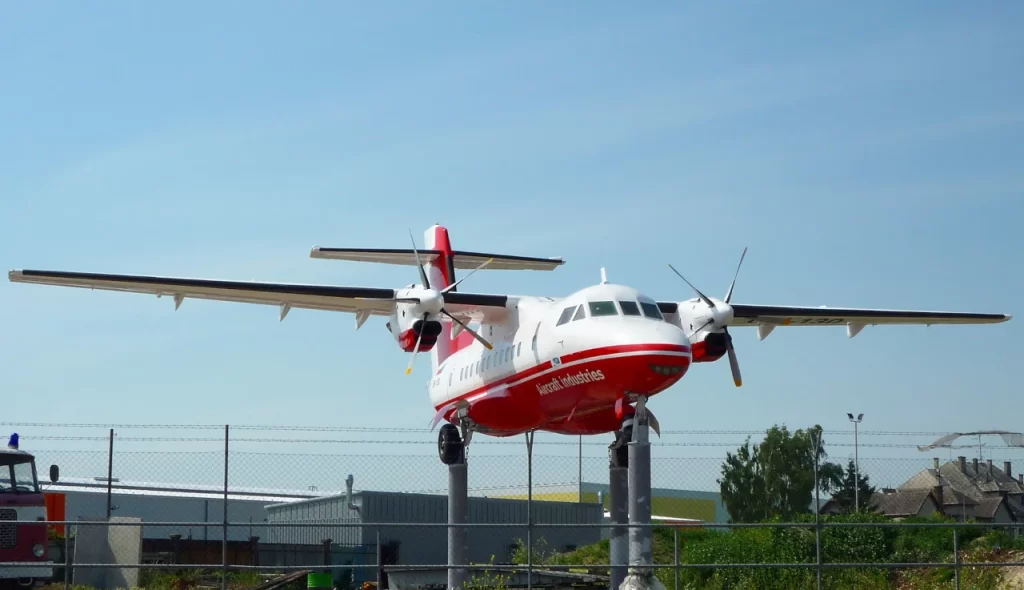The twin-engine turboprop regional passenger aircraft TVRS-44 “Ladoga” prototype will be completed by the end of 2024. All components are slated to arrive for final assembly this summer, and by the end of the year, the aircraft will begin workshop testing of its onboard systems. According to the website “Aviation of Russia” and the magazine “Vzlyot,” it will be able to take off in the first half of 2025.
The “Ladoga” is being built at the request of the Russian Ministry of Industry and Trade to replace an ageing fleet of Soviet small aircraft, including the An-24/26 and Yak-40.
The new schedules require the aircraft to undergo thorough certification tests in 2025. The first aircraft is planned to be delivered in 2027.
The TVRS-44 can transport 44 passengers or up to 5 tonnes of cargo in its basic configuration. The “Ladoga” will have a practical range of 2200 km with passengers and 1200 km with cargo, far exceeding the An-24’s comparable capabilities. The aircraft’s maximum takeoff weight will be 17.5 tonnes, with a cruising speed of 460-480 km/h and a flight height of 7200 metres. Implementing the “Ladoga” project should boost transportation to villages in the Far North, Siberia, and the Far East.
Various versions of the “Ladoga” are planned to meet the customer’s needs. UZGA specifically provides combination models for 36 people and 16 cubic metres of cargo, 20 passengers and 27 cubic metres of cargo, and medical evacuation and patrol-rescue variants of the TVRS-44.
UZGA says the “Ladoga” will become a “full-fledged universal aircraft.” It will be able to fly in severe temperatures and harsh natural environments.
A regional aircraft must be undemanding. Thus, the TVRS-44 will take off from asphalt, concrete runways, and unpaved and icy strips. This means that the ‘Ladoga’ can be used throughout the country, according to the UZGA.
Furthermore, the “Ladoga” will be distinguished by low noise levels and high comfort levels in the regional aircraft category. The aircraft would include a “spacious and bright cabin, comfy seats, and huge luggage shelves.”
The TVRS-44’s airframe assembly structure will be completely metal riveted. Composite materials will be used for the aircraft’s wings, nose fairing, fuselage tail section, and other components.

The Czechoslovakian Let Kunovice’s Let L-610 Transport Aircraft is regarded as the “Ladoga” inspiration. It was created in the late 1980s, but major production never occurred. As previously mentioned in an interview with the industry agency “Aviaport” by the project’s principal designer Sergey Merenkov, the TVRS-44 will be essentially a new aircraft.
“In reality, it turned out to be a 100% redesign of the prototype (L-610. – Ed), meaning the creation of a new aircraft. The equipment, materials, and fasteners are entirely new and entirely domestic. The fuselage is new, including the entire theory, cross-section, nose, and tail sections, the outlines of the crew cabin windshield, the entire structural-power scheme, the entire layout and wing and tail mounting,” Merenkov explained.
The “Ladoga” has larger proportions than the L-610. Ural specialists extended the fuselage by more than a metre, increased its width on the floor and boosted the capacity of the wing fuel tanks. Merenkov remarked that the maximum takeoff weight rose by approximately 20%, necessitating the adoption of powerful engine installations and new strengthened landing gear.
The TV7-117 ST-02 Engine
The TVRS-44 will be powered by the TV7-117ST-02 power plant developed by “ODK-Klimov” in St. Petersburg. It is a customised variant of the new TV7-117ST-01 engine, producing 2900-3100 horsepower.
According to the Rostec website, “The TV7-117ST-02 power output at takeoff will be 2400 hp, automatically increasing to 2600 hp in case of one engine failure, with its fuel consumption performance being the best in its class.”
Unlike the basic unit, the TV7-117ST-02 will have a closed oil system, allowing oil to stay when the engine is replaced. In addition, the engine will be outfitted with a starting generator enabling electrical startup (rather than traditional air startup). This is required for operating the “Ladoga” at airports in the North and Trans-Urals, where ground-based air starting facilities are unavailable.
Additionally, the TV7-117ST-02 will have a revised Automatic Regulation and Control Block (ARCB), and the engine mounting parts will be modified to accommodate the TVRS-44 suspension.
In December of 2023, “ODK-Klimov” was to deliver two TV7-117ST-02 engines for installation on the first experimental “Ladoga” prototype. With these engines, the aircraft is projected to take off in 2024. UZGA is expected to receive an additional two engines in the spring of 2024.
According to the United Engine Corporation (UEC) Telegram channel, “In addition, three more engines will be prepared for the aeroplane certification process. Thus, for the regional aircraft programme ‘Ladoga,’ ODK will deliver seven power plants needed for flying tests.”
The TV7-117 ST-02 powerplant is intended to transform the “Ladoga” into a highly fuel-efficient aircraft. The TV7-117ST-02 will provide the ‘Ladoga’ somewhat more speed than the An-24, but in terms of fuel efficiency, the UZGA aircraft will outperform the Soviet machine nearly twice.
Number Crunching
The “Ladoga” project is part of the aviation industry’s overall development programme until 2030, which the Russian government authorised at the end of June. More than 9.625 billion USD will be allocated for its implementation. As a result, by 2030, Russian airlines’ fleets should be supplemented with more than 1,000 new domestic aircraft.
The paper does not specify how many TVRS-44 aircraft can be delivered to customers during the next few years.
Sergey Merenkov has previously indicated that UZGA might build 220 aircraft between 2025 and 2035. The Ural enterprise’s maximum production rate is 26 aeroplanes per year.
